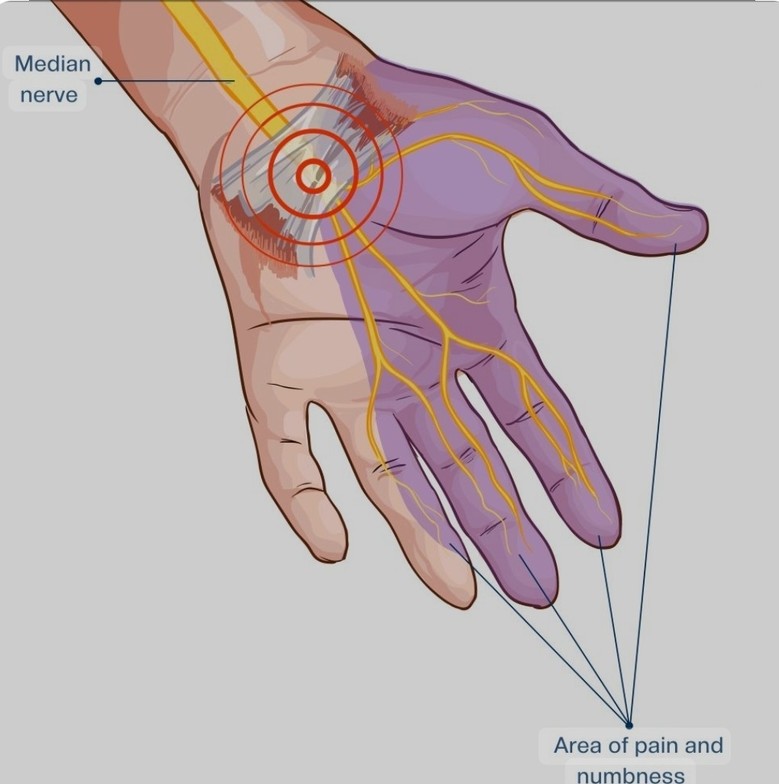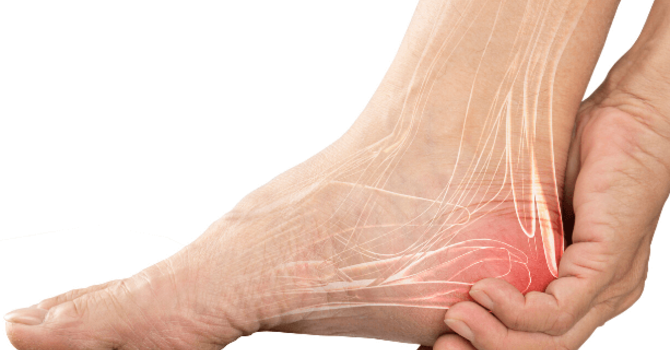
Understanding and Alleviating Wrist and Hand Pain: Carpal Tunnel Syndrome Unveiled
Recognizing the Signs and Exploring the Solutions
Wrist and hand pain, often accompanied by numbness, is a common complaint among many individuals. One of the primary culprits behind these symptoms is Carpal Tunnel Syndrome (CTS). This article delves into the intricacies of CTS, its causes, symptoms, and effective treatment options, with a special focus on physiotherapy management, to help you find relief and improve your quality of life.
What is Carpal Tunnel Syndrome?
Carpal Tunnel Syndrome occurs when the median nerve, which runs from your forearm into the palm of your hand, becomes compressed at the wrist. This compression can cause a range of symptoms, including pain, numbness, and tingling in the fingers and hand. According to the Mayo Clinic, CTS is often caused by a combination of factors, including wrist anatomy, underlying health conditions, and repetitive hand movements .
Recognizing the Symptoms
Early detection of CTS is crucial for effective treatment. Common symptoms include:
- Numbness or Tingling: Primarily in the thumb, index, and middle fingers. This sensation often occurs while holding a steering wheel, phone, or newspaper.
- Pain or Discomfort: Often felt in the wrist or hand, especially at night. Pain can sometimes extend up the arm.
- Weakness in the Hand: A tendency to drop objects due to weakness or numbness.
- Swelling Sensation: Many people report feeling as if their fingers are swollen, even though there is little or no visible swelling.
- Shock-like Sensations: These can radiate to the thumb and fingers.
- Difficulty Performing Fine Movements: Such as buttoning clothes.
If you experience these symptoms, it's essential to consult a healthcare professional for a proper diagnosis.
Causes and Risk Factors
Several factors can contribute to the development of CTS. These include:
- Repetitive Hand Movements: Activities that involve repetitive wrist flexion and extension, such as typing, can increase the risk of CTS .
- Wrist Anatomy: Certain anatomical factors, such as a smaller carpal tunnel, can make individuals more susceptible to CTS.
- Health Conditions: Conditions like diabetes, rheumatoid arthritis, and thyroid disorders can increase the risk of CTS .
- Fluid Retention: Pregnancy and menopause can cause fluid retention, increasing the pressure within the carpal tunnel.
Diagnosis and Treatment
Diagnosing CTS typically involves a physical examination, a review of symptoms, and possibly nerve conduction studies. Treatment options range from conservative measures to surgical interventions, depending on the severity of the condition.
Conservative Treatments:
1. Wrist Splinting: Wearing a wrist splint at night can help relieve symptoms by keeping the wrist in a neutral position.
2. Nonsteroidal Anti-Inflammatory Drugs (NSAIDs): Medications like ibuprofen can help reduce inflammation and alleviate pain.
3. Corticosteroid Injections: These injections can reduce inflammation and provide temporary relief from symptoms .
Surgical Treatments:
For severe or persistent cases, surgery may be necessary. Carpal tunnel release surgery involves cutting the ligament that is pressing on the median nerve to relieve pressure and improve symptoms.
Physiotherapy Management
Physiotherapy plays a crucial role in managing CTS. At West Calgary Physio & Massage, we offer specialized treatment plans tailored to your needs. Here’s how physiotherapy can help:
1. Exercise Therapy:
- Stretching Exercises: Gentle stretches can improve flexibility and reduce pressure on the median nerve.
- Strengthening Exercises: Targeted exercises can strengthen the muscles of the hand and forearm, improving overall function.
- Nerve Gliding Exercises: These exercises help the median nerve move more freely within the carpal tunnel.
2. Manual Therapy:
- Soft Tissue Mobilization: Techniques like massage can reduce muscle tension and improve circulation in the affected area.
- Joint Mobilization: Gentle movements of the wrist and hand joints can enhance mobility and reduce stiffness.
3. Ergonomic Advice:
- Workstation Adjustments: Recommendations on optimizing your workspace to minimize wrist strain.
- Activity Modification: Guidance on altering daily activities to reduce repetitive stress on the wrists.
4. Pain Management Techniques:*l
- Ultrasound Therapy: This can help reduce inflammation and pain.
- Heat and Cold Therapy: Alternating between heat and cold can help manage symptoms effectively.
5. Education:
- Self-Management Strategies: Educating patients on lifestyle changes and self-care techniques to prevent recurrence.
Preventive Measures
To reduce the risk of developing CTS, consider implementing the following preventive measures:
- Ergonomic Adjustments: Ensure your workstation is ergonomically designed to minimize strain on your wrists and hands.
- Regular Breaks: Take frequent breaks to rest and stretch your hands and wrists, especially during repetitive tasks.
- Hand and Wrist Exercises: Strengthening and stretching exercises can help maintain flexibility and reduce the risk of CTS.
Conclusion
Wrist and hand pain due to Carpal Tunnel Syndrome can significantly impact daily activities and overall quality of life. By recognizing the symptoms early and seeking appropriate treatment, you can manage the condition effectively. At West Calgary Physio & Massage, our team of experts is dedicated to providing personalized care and treatment options to help you find relief from wrist and hand pain.
References
1. Mayo Clinic. (n.d.). Carpal Tunnel Syndrome. Retrieved from [Mayo Clinic](https://www.mayoclinic.org/diseases-conditions/carpal-tunnel-syndrome/symptoms-causes/syc-20355603)
2. PubMed. (n.d.). Carpal Tunnel Syndrome: Risk Factors and Prevention. Retrieved from [PubMed](https://pubmed.ncbi.nlm.nih.gov/)
3. National Institute of Neurological Disorders and Stroke (NINDS). (n.d.). Carpal Tunnel Syndrome Fact Sheet. Retrieved from [NINDS](https://www.ninds.nih.gov/disorders/patient-caregiver-education/fact-sheets/carpal-tunnel-syndrome-fact-sheet)
4. Quora. (n.d.). What are the Effective Treatments for Carpal Tunnel Syndrome? Retrieved from [Quora](https://www.quora.com/What-are-the-effective-treatments-for-carpal-tunnel-syndrome)
By staying informed and proactive, you can take steps to manage and prevent Carpal Tunnel Syndrome, ensuring a healthier and more comfortable life.
Taffy PT
Contact Me


